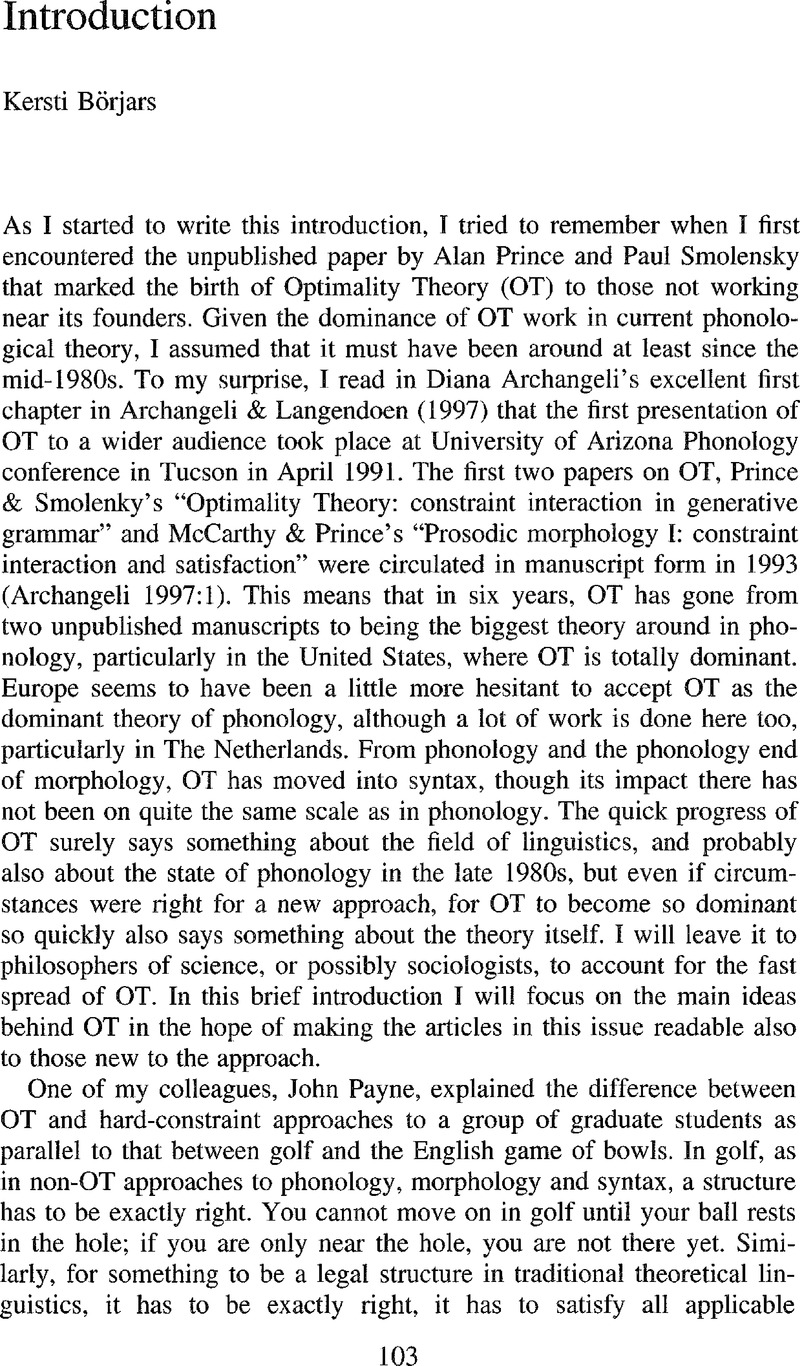Sells, P. 1998. Scandinavian Clause Structure and Object. In
Butt, M. &
King, T. H. (eds),
Proceedings of LFG-98.
Stanford:
CSLI Publications, Speas, M. 1997. Optimality Theory and Syntax: Null Pronouns and Control. In Archangeli, D. & Langendoen, D. T. (eds),
Optimality Theory: An Overview. Oxford: Blackwell, 171–199.
Google Scholar 